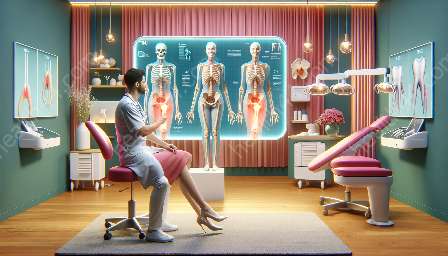Temporomandibular joint disorder (TMJ) is a complex condition that affects the jaw joint and the muscles that control jaw movement. Understanding the diagnostic methods for TMJ and its orthodontic considerations is crucial for effective treatment.
Causes and Symptoms of TMJ Disorder
The temporomandibular joint is a complex joint that allows for movement of the jaw. TMJ disorder can arise from a variety of factors, including
- Muscle tension and jaw clenching
- Arthritis or joint damage
- Misaligned teeth or jaw
- Trauma or injury to the jaw
Common symptoms of TMJ disorder include
- Jaw pain or tenderness
- Difficulty chewing or pain while chewing
- Clicking or popping sounds in the jaw
- Jaw locking or limited movement
- Headaches or earaches
Diagnostic Methods for TMJ Disorder
Accurately diagnosing TMJ disorder is essential for developing an effective treatment plan. A comprehensive evaluation typically involves a combination of clinical assessment, imaging studies, and dental examination. Some of the diagnostic methods commonly used for TMJ disorder include:
Clinical Assessment
A thorough clinical examination is crucial for identifying the signs and symptoms of TMJ disorder. The dentist or orthodontist will assess the patient’s jaw movement, muscle tenderness, and joint sounds. Additionally, they may conduct tests to evaluate the range of jaw motion and identify any abnormalities in jaw function.
Imaging Studies
Diagnostic imaging techniques such as X-rays, CT scans, and MRI can provide detailed images of the TMJ and surrounding structures. These images can help identify anatomical abnormalities, joint displacement, and degenerative changes in the joint. By visualizing the internal structures of the joint, these imaging studies aid in diagnosing TMJ disorder and assessing the extent of the condition.
Dental Examination
Assessing the occlusion, tooth alignment, and bite relationship is essential in diagnosing TMJ disorder, especially when considering orthodontic treatment. The dentist or orthodontist may perform an evaluation of the teeth and jaw relationships to determine if malocclusion or misalignment contributes to the patient’s TMJ symptoms.
Orthodontic Considerations in TMJ Disorder
Orthodontic treatment plays a significant role in managing TMJ disorder, particularly when malocclusion or misaligned teeth contribute to the condition. The following are some orthodontic considerations in addressing TMJ disorder:
- Bite Analysis: A thorough analysis of the patient's bite is essential in understanding how the teeth come together and function. Malocclusion, or improper alignment of the teeth, can contribute to TMJ disorder, and addressing this issue through orthodontic treatment can help alleviate TMJ symptoms.
- Orthodontic Appliances: Using orthodontic appliances such as braces or clear aligners can help correct misaligned teeth and improve the overall bite relationship. By achieving proper tooth alignment and bite function, orthodontic treatment can reduce the strain on the temporomandibular joint and alleviate TMJ symptoms.
- Collaborative Approach: Collaboration between orthodontists, dentists, and other healthcare professionals is crucial in addressing TMJ disorder. An integrated approach that takes into account the patient's dental and skeletal relationships, jaw function, and overall oral health is essential for successful treatment outcomes.
Treatment Options for TMJ Disorder
Once a comprehensive diagnosis has been established, a tailored treatment plan for TMJ disorder can be developed. Treatment options may include:
- Conservative measures such as lifestyle modifications, stress management, and physical therapy to alleviate symptoms
- Orthodontic treatment to address malocclusion and bite issues
- Customized oral appliances to help stabilize the jaw and alleviate symptoms
- Invasive interventions such as arthrocentesis or arthroscopic surgery for severe cases
- Pain management techniques to relieve discomfort and improve jaw function
- Collaboration with other healthcare professionals for multidisciplinary care when necessary
By incorporating orthodontic considerations into the diagnosis and treatment of TMJ disorder, healthcare providers can address not only the symptoms but also the underlying dental and skeletal factors contributing to the condition. Understanding the complex interplay between dental anatomy, bite function, and TMJ health is essential for providing holistic care to individuals with TMJ disorder.


